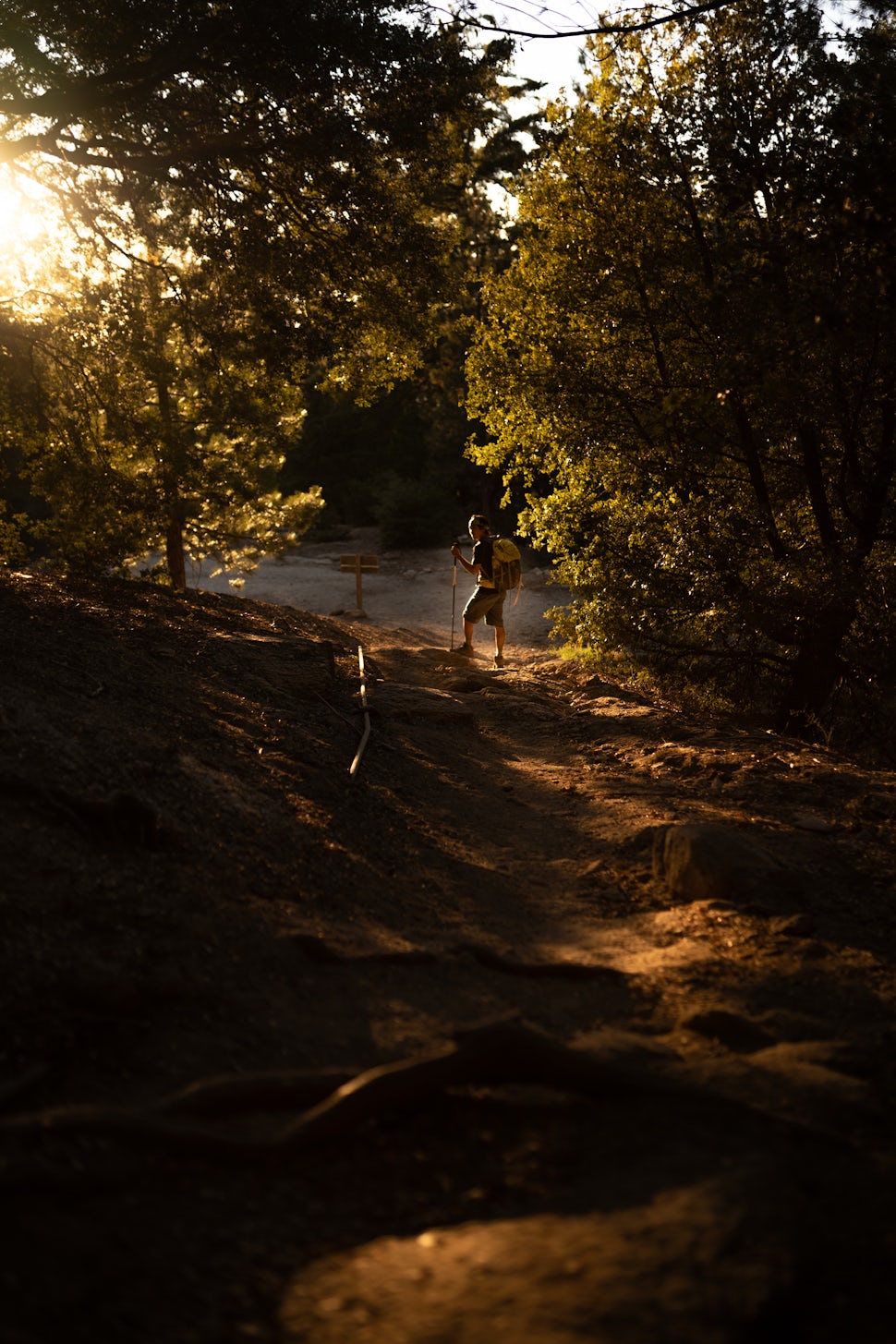That Boring Hike
Oh, that hike? No, I mean yeah we can totally do that hike, it’s just a little… boring.

Oh, that hike?
No, I mean yeah we can totally do that hike, it’s just a little… boring.
Like, it’s definitely better than nothing. It’s a good way to get outside, get some fresh air, and absorb some sunlight that has travelled ninety one and a half million miles from an ongoing nuclear reaction floating in outer space to our skin where we experience it as warmth, energy and light, at which point a mysterious automatic chemical reaction occurs that literally transforms cholesterol stored in our skin into Vitamin D which is essential to life as we know it and pretty difficult for humans to find any other way on this planet besides simply stepping outside and letting sunlight fall on our bare bodies. Other than that, the hike is a little predictable though.
Don’t get me wrong, it’s a nice hike. It meanders through some trees that have lived here for fifty to a hundred years surviving on nothing but sunlight, water, air, and dirt. Yeah, dirt—you know, that brown stuff that covers the surface of the planet that us humans can’t get any direct sustenance out of whatsoever but which somehow contains enough raw energy to sustain a giant, living, organic air filter made out of roots and bark and leaves that constantly uses sunlight (from that ongoing nuclear reaction ninety one and a half million miles away) to filter carbon dioxide out of the air (yes, that same gas we all breathe every single moment of every single day) and split it into another gas—oxygen—and a dense solid fiber—wood—which is the opposite of a gas, which we can chop and saw and craft into tables and books and violins. Then, believe it or not, if you heat that same wood up to 300 degrees Celsius (572 degrees Fahrenheit) it turns back into the light and carbon dioxide that formed it in the first place. They’re just common oak trees though, they’re all over the place. B-O-R-I-N-G.
In the spring, wildflowers grow along the sides of the trail in vibrant blues and violets and oranges and yellows. Nobody planted them there, they just happen to grow there every year from seeds, tiny little organic supercomputers which miraculously contain enough genetic information to instruct the flower how many petals to grow and precisely how much sugar to mix with water so that bees and hummingbirds and other pollinators are attracted to it in order to not only feed those animals but also to literally transport bits of their own genetic material via the hair or feathers or antennae of those pollinators to other flowers so those flowers can create seeds of their own that are spread by the wind or animals or bugs or people, sometimes traveling all the way through the digestive tract of an animal before ending up in the ground where they sit and wait until just the right combination of moisture, heat, and sunlight triggers them to explode upwards and downwards to repeat the entire process over again. These same flowers also let off scents that have an insane ability to send your mind back in time and hit play on an instantaneous movie you didn’t even know was already in your head of a time in the past when you smelled those particular flowers (last time I tried smelling one, it put me back in the front yard of my grandmother's house when I was six years old and she showed me where to pinch a Snapdragon to get its petals to open and close like a mouth). You can see more flowers in other places though, it’s not all that exciting.
The hike runs along a small creek (it’s really not much to speak of) which varies from a dry wash in the summer to a bubbling rapid in the spring. The water in it, powered by nothing more than gravity, travels anywhere from a few dozen to a few hundred miles from the San Gabriel mountains across the surface of the earth, joining millions and billions of other water particles along the way by some phenomenon scientists call “surface tension”, somehow managing to stay above the earth (apparently using the same surface tension that makes the droplets stick together in the first place) instead of sinking out of sight down below the dirt. Along the way, it provides habitat and food and hydration for hundreds of thousands of plants, insects, and animals which would otherwise die living here in Southern California but manage to survive in their little natural desert-aquarium shaped like a creek. It’s really nothing special.
You know what, never mind, we don’t have to go on a hike. We could watch a travel documentary, or Planet Earth has some great 4K footage of whales. I have surround sound, it’ll be like we’re actually in the ocean. If you really want to though, I guess we could go do that one hike through the neighborhood.
But I’m telling you, it’s boring.
We want to acknowledge and thank the past, present, and future generations of all Native Nations and Indigenous Peoples whose ancestral lands we travel, explore, and play on. Always practice Leave No Trace ethics on your adventures and follow local regulations. Please explore responsibly!
Do you love the outdoors?
Yep, us too. That's why we send you the best local adventures, stories, and expert advice, right to your inbox.








